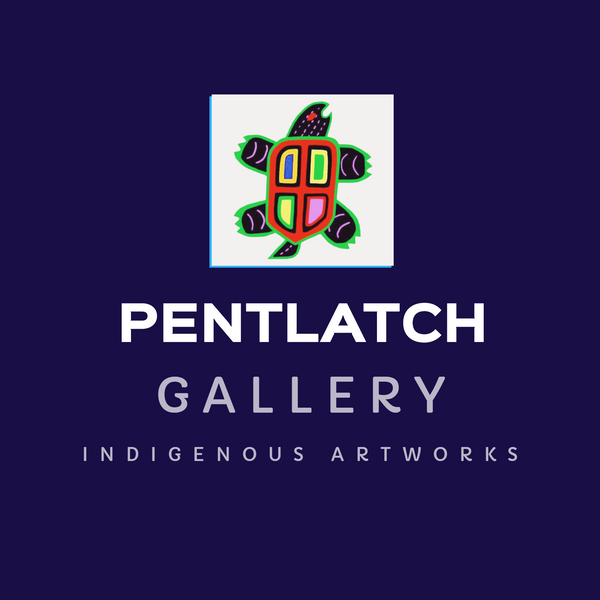About Aboriginal Canadian Art
Share
Historical Context
Canadian Aboriginal art has a history that spans thousands of years, with roots deeply embedded in the cultural and spiritual practices of the Indigenous peoples. Art has always been an integral part of social and ceremonial life, often used to convey stories, traditions, and connections to the land.
Major Indigenous Groups and Their Art Traditions
-
First Nations: Encompassing a wide range of cultures and languages, First Nations art varies significantly across regions.
- West Coast (Northwest Coast): Known for its highly stylized and complex art forms, including totem poles, masks, and bentwood boxes. The art often features ovoid shapes and formlines, depicting animals and spiritual beings.
- Plains: Known for beadwork, quillwork, and painted hides. Artworks often reflect the nomadic lifestyle and the significance of the bison.
- Woodland (Eastern Woodlands): Characterized by birchbark biting, quillwork, and rock paintings. Artists from this region often depict spiritual themes and natural elements.
-
Inuit: Renowned for their carvings in stone, bone, and ivory, as well as prints and textile arts.
- Carvings: Often made from soapstone, whalebone, and antlers, depicting animals and human figures.
- Printmaking: Began in the mid-20th century, with artists using stonecut and stencil techniques to create prints that reflect Inuit mythology and daily life.
- Textiles: Includes elaborate tapestries and garments, often adorned with intricate appliqué and embroidery.
-
Métis: A distinct cultural group of mixed Indigenous and European ancestry, known for their vibrant beadwork and textiles.
- Beadwork: Famous for floral designs on clothing, bags, and other items.
- Textiles: Includes the iconic Métis sashes, known as "ceintures fléchées," which are finger-woven and feature colorful geometric patterns.
Contemporary Indigenous Art
Modern Indigenous artists often blend traditional techniques and themes with contemporary issues and mediums. Notable artists include:
- Bill Reid (Haida): A master goldsmith, carver, and sculptor known for his work that revives and modernizes Haida art.
- Norval Morrisseau (Ojibwe): The founder of the Woodland School of art, known for his vibrant paintings that depict Ojibwe cosmology.
- Annie Pootoogook (Inuit): Known for her drawings that provide a contemporary perspective on Inuit life.
Significance and Themes
Indigenous Canadian art is deeply symbolic and often focuses on themes such as:
- Connection to the Land: Many artworks reflect the profound spiritual connection Indigenous peoples have with their ancestral lands.
- Mythology and Spirituality: Art often depicts legends, spiritual beings, and cosmological stories.
- Cultural Identity: Art serves as a means of preserving and expressing cultural identity, traditions, and history.
Preservation and Promotion
Efforts to preserve and promote Indigenous art include:
- Cultural Centres and Museums: Institutions like the Canadian Museum of History and the Inuit Art Centre play a crucial role in showcasing and preserving Indigenous art.
- Art Festivals and Exhibitions: Events like the Indigenous Art Biennial and various regional art shows provide platforms for artists to share their work.
- Educational Programs: Initiatives to educate both Indigenous and non-Indigenous communities about the significance and history of Indigenous art.
Canadian Aboriginal art is a testament to the rich cultural heritage and ongoing resilience of Indigenous peoples. It continues to evolve, reflecting contemporary issues while honoring traditional practices.
